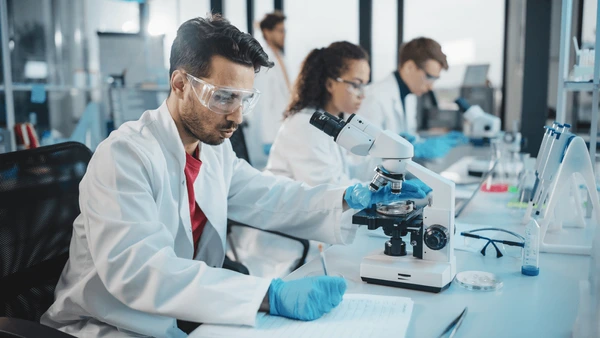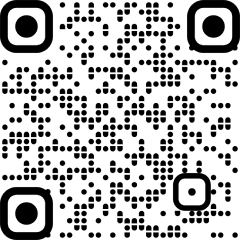
New Delhi: The word ‘psychedelic’ conjures up images of a wild, mind-bending trip of the 1960s. But what if the same ‘trippy’ substances used in drugs like LSD and magic mushrooms could be used to treat mental health problems? A new study may have opened the way.
A team at the Tata Institute of Fundamental Research (TIFR) in Mumbai has conducted a first-of-its-kind study to come out of India, using psychedelics to identify the neurons that can activate the ventral hippocampus in the brain – the process. Handles emotional information and stress – in a way that can alleviate anxiety.
“People’s first reaction to psychedelics is often anxiety. But LSD, a synthetic psychedelic, psilocybin, found in magic mushrooms, and substances such as mescaline derived from cacti have been used by traditional healers for thousands of years—from ancient tribes in Central and South America, from the Amazonians to the Incas. widely used by. long before they became symbols of rebellion,” says Vidita Vaidya, a neuroscientist and Professor of Biological Sciences at TIFR who led the project.
Targeting the ventral hippocampus can help reduce anxiety at both the cellular and neural levels, she says. “And using psychedelic medicine as a tool to achieve this opens the door to more targeted treatments for anxiety disorders, as well as the development of psychedelic-inspired drugs for treatment-resistant mental health conditions like PTSD and depression without triggering hallucinations,” she adds.
The drug used in their study is a synthetic called DOI, which was designed by Alexander Shulgin in 1984. That’s why we worked with DOI, which is powerful but not a common street drug and not abused like LSD or psilocybin. However, it belongs to the same umbrella of psychedelics that alter the state of reality,” says Vaidya, whose journey with DOI dates back to his days as a PhD student. “I have seen it from multiple angles. It has profound, diverse effects — as an antidepressant, it induces hallucinations, reduces anxiety. We also studied its ability to alter mitochondria (the energy cells need to function). Our main question was, How does DOI reduce anxiety?” To confirm that it actually does, the team used the ‘elevated plus maze’—a device with open and closed arms used to measure anxiety in rats. “We observed that After being injected with DOI, they would explore more open and dangerous areas. This was the first step, confirming that DOI reduces anxiety in rats and mice.”
But there were still gaps in understanding “where in the brain” this was happening. “When my student Prachi Tiwari expressed a desire to study this in more depth for her PhD thesis, I told her, ‘This is a delicate problem that will require multiple approaches,’ but she was determined,” says Vaidya. says
What began as a challenge five years ago grew into a collaborative effort that expanded beyond his TIFR lab into a multi-institutional study with researchers from Cornell, Yale, and Columbia universities working together. “So, it became an international effort because we brought in colleagues from all these universities to do experiments so that our collaborators could help us respond faster,” says Vaidya. After several tests on rats, the ventral hippocampus was identified as a key anxiety-reducing target for DOI.
But they still faced a challenge. “It’s a part of the brain that has millions of different types of cells. We suspected it might be a specific group of neurons but were not sure,” says Vaidya. While Cornell helped identify “PV-positive neurons” that were hyperactive when the drug was present.
Vaidya breaks it down with a simple analogy: “Think of the brain as a map of Mumbai. We knew that DOI works, like knowing something is happening in a busy city like Mumbai. But we didn’t know exactly where. So, we had to search neighborhood by neighborhood—until we found the marine drive, which represents the ventral hippocampus. Even then, it was not just any building, but definitely Art Deco. Those are our PV-positive neurons. Once we know that, we can target just those neurons to get the anxiety-reducing effect without needing the whole drug.
The finding was significant, as these neurons reduce anxiety without triggering hallucinations. “By understanding how these psychedelics work at a deeper level, we can design drugs that target the parts of the brain responsible for reducing anxiety without unwanted effects such as hallucinations. Some colleagues are already designing psychedelic-inspired drugs that do not produce hallucinations or motor effects.
Vaidya, whose scientific career has focused on the ‘neurobiology of emotion’, is discussing his findings with experts at Nimhans to move the research from the laboratory to clinical trials. “But India currently lacks clinical trials for psychedelic-assisted therapy…Australia, Europe and the US are moving ahead with major, carefully controlled trials,” says Vaidya.
Biju Vishwanath, an additional professor of psychiatry at NIMHANS specializing in the effects of psychotropics on neural stem cell lines, said current drugs for anxiety and depression take weeks to become effective and put patients at risk during the waiting period. “Especially because about 50% of patients do not respond to existing pharmacological treatments,” he said. “Exploring new classes of agents using animal models is a promising approach.”
But he cautions that clinical trials in India are still far away due to their high abuse potential. Vaidya shares his frustration. “Our regulatory knots make it difficult to do this kind of research in India,” she says, as she prepares to present the research at the 2025 Gordon Research Conference on the Neurobiology of Psychedelics in Rhode Island. “We need to stop playing catch-up…Right now, we have very few psychedelic researchers. That doesn’t bode well for a nation facing a growing mental health crisis.”










